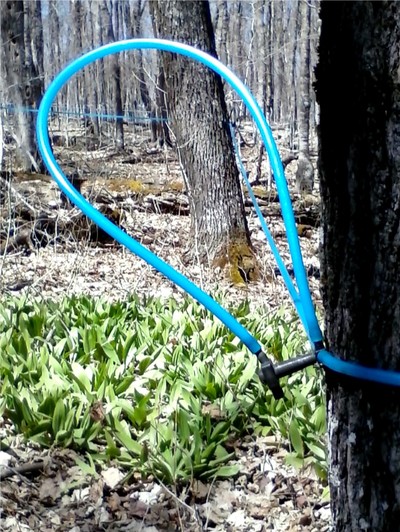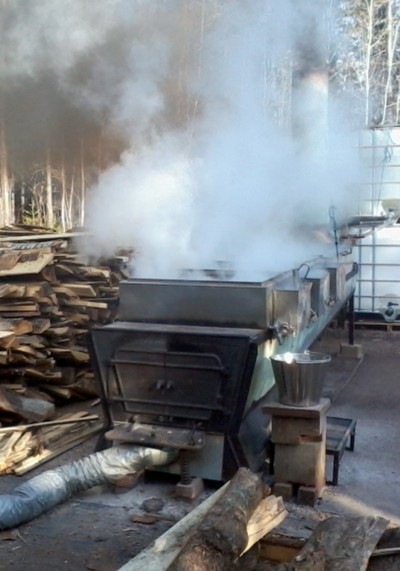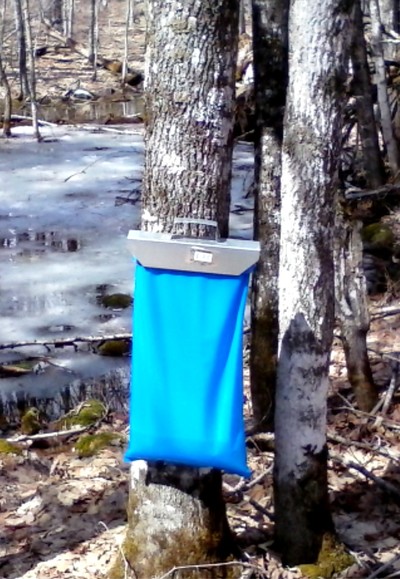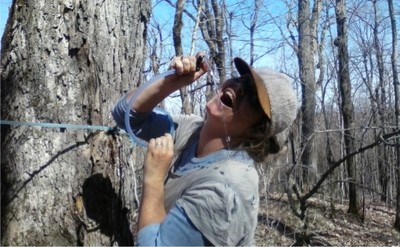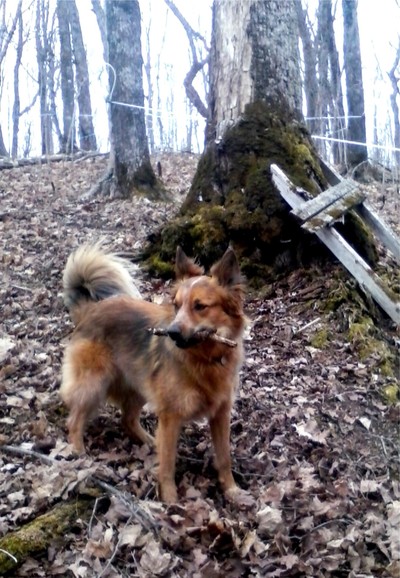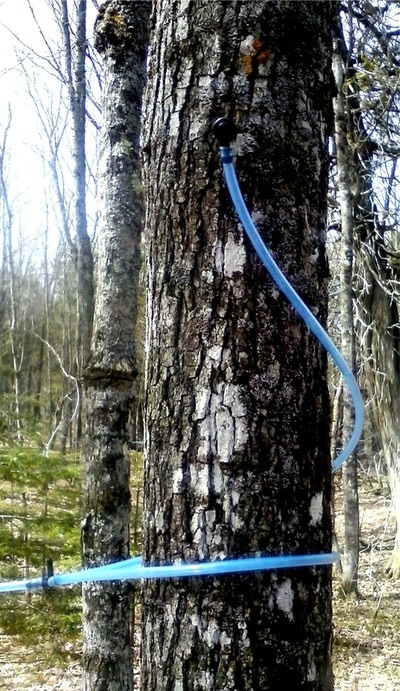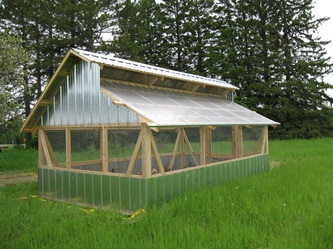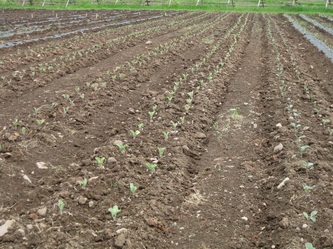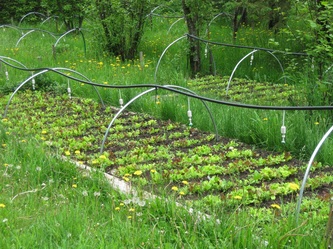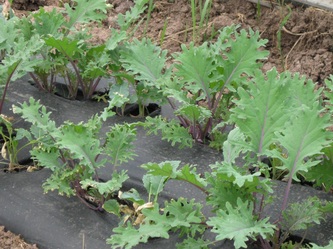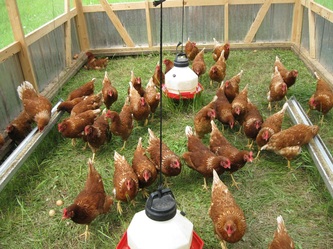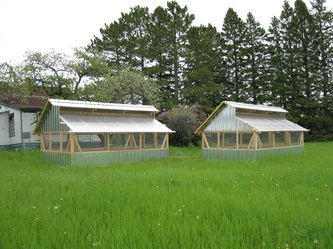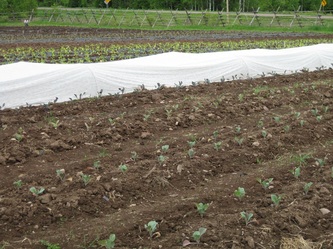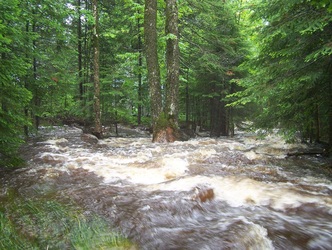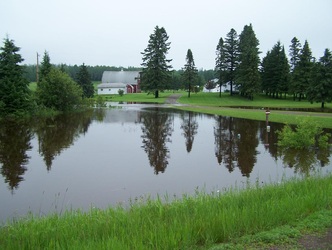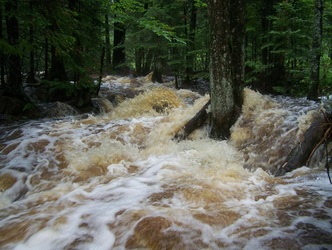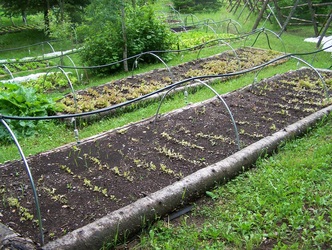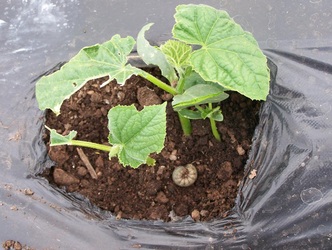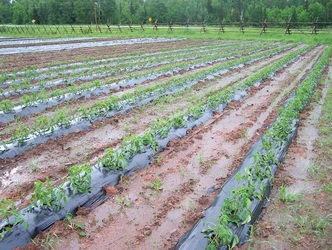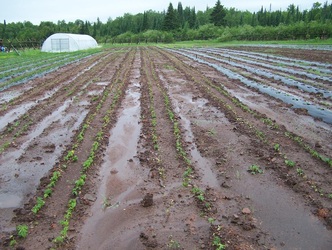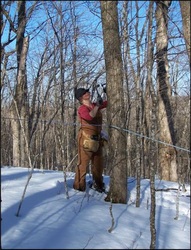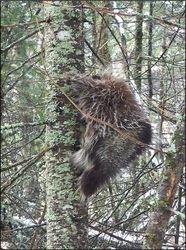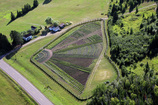Vernal Equinox, 2017. The gusts of a cold, strong wind suggest that winter lingers on in northern Minnesota. But the sun also shines today, this first day of spring, and snow melts from the roof. The sap slowly trickles from the waking trees to our sap tanks, and the creek sounds melodious, a surge of water below the ice from recent melts, creating hollowed chambers that fill the Crow with mysterious and delightful sounds (sounds that a prick-eared puppy, eyes focused as a fox, tilts his head back and forth at in endless curiosity). Today the sun crosses the celestial equator on its way north along the ecliptic. All over the world, days and nights are equal (at least approximately so). Given how unequal much of the human habitation of this world insist it remains, the confounding political times and confusing nature of people, there is something about this celestial equality that sounds beautiful to us.
Amidst the madness of these times, we continue to carve out our quiet footprint on this earth, a beautiful boreal land where our farm and sugarbush take shape in the form of a livelihood filled with the duality of hope and frustration, worth and hard work, play and sacrifice. This season, we begin our focus on maple syrup expansion, with fall plans for new lines that access a mostly untouched 40-acre parcel, and this spring, we tap additional trees, Cree taking on role of sap collector for the 100 new bags hung in lieu of mainline access, the dips in the land not always working in our gravitational favor.
While expansion brings the potential for more product, additional sales, we find ourselves worrying about the season, whether it will be kind to us or not, the return on investment felt in a short order of years or internalized for a decade. That is the nature of farming, made more risky in the face of a changing climate, where our trees uncharacteristically woke up in mid-February during the week of 50-60 degree temps, which followed an earlier thaw in January. We do not pretend to know the long-term impact these early freeze-thaw cycles have on the sugar maples, but we have seen the short-term impact on other species in the bush - the frogs that wake early from melted vernal pools, only to be deceived by the return of freezing temps, the vibrant choral sounds quieted as the population seems culled. Over the coming decades, will the trees and frogs adapt? Or will the composition of species simply change? We ask these same question of ourselves. Will we adapt? Will we change? The questions, when posed to the human species, takes on more meaning, more metaphor.
While our 30-year sugaring history (mostly recorded before our involvement by our mentor Phil) provides context to feel anxiety about the season, there are far too many nuances and ecosystem complexities that make or break a sugaring season to suggest we should anticipate a poor year. Overall, we have hope and are in high spirits. Our trees are healthy, the cold that has followed the thaws seem to have rejuvenated the trees, and the bush sits in the highlands, an area that is colder and snowier than the surrounding lands, offering protection, insulation, an insurance policy of sorts. That chapter - whether we have a good or poor season - is yet to be written.
For now, we continue to plug away in preparation for the first sap run (we technically already had an early 300 gallon sap run, but because the temperature swing was a 45-degree change overnight, it now sits as a “sapsicle” in the bulk tank). We look forward to long nights stoking the evaporator, little to no sleep (which does something good for the soul), the smell of wood and heat mingled with brisk spring nights under the dark sky, brilliant stars, as we have long talks or work in silence, listen to classical music (we were never fans before Phil but now we are), the occasional hockey game, French Canadian accents making the game more endearing to us (or perhaps that is just Jason who brings out his excellent Jacques Lemaire accent whenever a hockey game comes on). But most often, it's just us and the wind, the crackle of fire and mating calls of the saw-whet and barred owls, the occasional northern lights that sweep the sky.
We reflect often on the duality of this livelihood - the reward of what works and the frustrations felt by what does not - coupled with the increasing risk that the farming community, and other natural resource based businesses face. We reflect upon this world, this very confounding time, and find that we can’t decide if staying put on this footprint of a farm and sugarbush, work in the woods and on water, trying to do good with our relationship to the land and people and food, will be our peace amidst the confusion, or if it will be our undoing.
We think about losing the madness we often feel by heading over the mountains, to begin again, the west a powerful force that is always calling Cree home. But after deciding to not apply for an ideal Colorado job, one that could have offered the opportunity for limited dual residency to continue some of our enterprises in Minnesota, we understood with an elevated clarity, that this chapter too, the writing of our farm, is not finished. The west could have provided much that we crave. But so too, could it have diminished the values that drive our purpose - the connection to land and seasonal cycles of nature, working our enterprises together in a loving marriage, deep and meaningful relationships with those who support us, making a living from the land. The idea of sending Jason home alone to manage “operations” in Minnesota lost all meaning to us. The Colorado job felt right, the timing, and ultimately our desire, was wrong...a telling tale for our future.
So we continue to write this book, leaving us with a combination of emotions - resolve to figure out what our next chapter of the farm and sugarbush looks like (we do not think it is more of the same), relief to not give up on this beautiful little life and livelihood we've created here, sadness to have bypassed change and a move back west as Cree still senses that she will never fully feel like herself here, and acceptance in the fact that she must continue to try, and that effort, one she is familiar with over the past decade, has in its own right, been very rich and rewarding.
With this elevated clarity, we plan for the future, think creatively about niches for our enterprises, and feel positive going forward. Finances will keep change somewhat contained, and time is needed to learn and explore, but we’ve got some ideas simmering, not quite ready to breathe air on yet, but that are keeping us up at night. For now, we approach this season much the same. We will continue CSA, the changes we made last year had a needed, positive impact that gives us energy to continue to be vegetable producers. We thank those of you who stuck with us through the changes, the most notable, a shift to Saturday delivery. We will continue with this delivery day, and hope it will continue to work for you, and for others we encourage to join our farm. Sugaring will see some expansion, which feels really good, and with hopes for good production, our maple syrup may find it’s way into a few new markets to include a couple mountain markets in Colorado (good for our quality of life to do some business out west, Minnesota is after all, the most local it gets for syrup given our states western edge of maples), and in a lager at the request of our very local Castle Danger Brewery! We will continue with laying hens for eggs, spring transplant sales, and wreaths, three of our smaller but highly beloved enterprises of the farm. We hope to increase our value-added products - jams and jellies, canned and pickled vegetables - for Julebyen and other off-season markets, and we hope to do more direct sales of vegetables, something we had good intention of last season, but given our introvert nature, didn’t have an efficient communication system set up to actively reach out when we had excess product (it may be time to be better at Facebook, something only Jason has dipped his toe in and Cree has long lacked a desire for, given how much time she spends on a computer for other non-farm work). And finally, we hope as we always do, that the 2017 fishing season will be a good one and that Jason can find his way, amidst the hectic nature of our lives, onto the lake more often and when the fishing is good (last season was a very poor year with little fish to market due to a collision of perfect storms, literally, and two emergency surgeries in New York for our greatly loved and cared for cattle dog, Ruby Mountain, right when the fishing season got good).
Given these descriptions above, perhaps it seems that little is changing. We go about this season, much the same as the season before. There is a comfort in continuity. But so too, do we wear our values on our sleeves, they are too great to fit in our chests, and constantly seek metamorphism to ensure that the decisions we make are aligned with our values, taking us in the right direction. For this to happen, change is constant in our lives - a slow and steady movement. Jason thinks that perhaps we will “arrive” some day to that place of contentment, a life made complete by that which works. But Cree is not so sure it works that way, at least not for people like us. It seems that it is the acceptance of this tension, the acceptance of the constant duality of our lives, that allows us the contentment we seek. With age, we grow more accepting.
On a more urgent note, in the duration of this writing, the sap run went from a trickle to a pour. The sun and its great power to warm is stronger than the gusts of today's winter wind. It is the vernal equinox, the first day of spring, a day of celestial equality and hope that inspires a personal kind of reflection. But with 1000 gallons of sap now collected, it is time to put down the pen. Our real work has begun...
Amidst the madness of these times, we continue to carve out our quiet footprint on this earth, a beautiful boreal land where our farm and sugarbush take shape in the form of a livelihood filled with the duality of hope and frustration, worth and hard work, play and sacrifice. This season, we begin our focus on maple syrup expansion, with fall plans for new lines that access a mostly untouched 40-acre parcel, and this spring, we tap additional trees, Cree taking on role of sap collector for the 100 new bags hung in lieu of mainline access, the dips in the land not always working in our gravitational favor.
While expansion brings the potential for more product, additional sales, we find ourselves worrying about the season, whether it will be kind to us or not, the return on investment felt in a short order of years or internalized for a decade. That is the nature of farming, made more risky in the face of a changing climate, where our trees uncharacteristically woke up in mid-February during the week of 50-60 degree temps, which followed an earlier thaw in January. We do not pretend to know the long-term impact these early freeze-thaw cycles have on the sugar maples, but we have seen the short-term impact on other species in the bush - the frogs that wake early from melted vernal pools, only to be deceived by the return of freezing temps, the vibrant choral sounds quieted as the population seems culled. Over the coming decades, will the trees and frogs adapt? Or will the composition of species simply change? We ask these same question of ourselves. Will we adapt? Will we change? The questions, when posed to the human species, takes on more meaning, more metaphor.
While our 30-year sugaring history (mostly recorded before our involvement by our mentor Phil) provides context to feel anxiety about the season, there are far too many nuances and ecosystem complexities that make or break a sugaring season to suggest we should anticipate a poor year. Overall, we have hope and are in high spirits. Our trees are healthy, the cold that has followed the thaws seem to have rejuvenated the trees, and the bush sits in the highlands, an area that is colder and snowier than the surrounding lands, offering protection, insulation, an insurance policy of sorts. That chapter - whether we have a good or poor season - is yet to be written.
For now, we continue to plug away in preparation for the first sap run (we technically already had an early 300 gallon sap run, but because the temperature swing was a 45-degree change overnight, it now sits as a “sapsicle” in the bulk tank). We look forward to long nights stoking the evaporator, little to no sleep (which does something good for the soul), the smell of wood and heat mingled with brisk spring nights under the dark sky, brilliant stars, as we have long talks or work in silence, listen to classical music (we were never fans before Phil but now we are), the occasional hockey game, French Canadian accents making the game more endearing to us (or perhaps that is just Jason who brings out his excellent Jacques Lemaire accent whenever a hockey game comes on). But most often, it's just us and the wind, the crackle of fire and mating calls of the saw-whet and barred owls, the occasional northern lights that sweep the sky.
We reflect often on the duality of this livelihood - the reward of what works and the frustrations felt by what does not - coupled with the increasing risk that the farming community, and other natural resource based businesses face. We reflect upon this world, this very confounding time, and find that we can’t decide if staying put on this footprint of a farm and sugarbush, work in the woods and on water, trying to do good with our relationship to the land and people and food, will be our peace amidst the confusion, or if it will be our undoing.
We think about losing the madness we often feel by heading over the mountains, to begin again, the west a powerful force that is always calling Cree home. But after deciding to not apply for an ideal Colorado job, one that could have offered the opportunity for limited dual residency to continue some of our enterprises in Minnesota, we understood with an elevated clarity, that this chapter too, the writing of our farm, is not finished. The west could have provided much that we crave. But so too, could it have diminished the values that drive our purpose - the connection to land and seasonal cycles of nature, working our enterprises together in a loving marriage, deep and meaningful relationships with those who support us, making a living from the land. The idea of sending Jason home alone to manage “operations” in Minnesota lost all meaning to us. The Colorado job felt right, the timing, and ultimately our desire, was wrong...a telling tale for our future.
So we continue to write this book, leaving us with a combination of emotions - resolve to figure out what our next chapter of the farm and sugarbush looks like (we do not think it is more of the same), relief to not give up on this beautiful little life and livelihood we've created here, sadness to have bypassed change and a move back west as Cree still senses that she will never fully feel like herself here, and acceptance in the fact that she must continue to try, and that effort, one she is familiar with over the past decade, has in its own right, been very rich and rewarding.
With this elevated clarity, we plan for the future, think creatively about niches for our enterprises, and feel positive going forward. Finances will keep change somewhat contained, and time is needed to learn and explore, but we’ve got some ideas simmering, not quite ready to breathe air on yet, but that are keeping us up at night. For now, we approach this season much the same. We will continue CSA, the changes we made last year had a needed, positive impact that gives us energy to continue to be vegetable producers. We thank those of you who stuck with us through the changes, the most notable, a shift to Saturday delivery. We will continue with this delivery day, and hope it will continue to work for you, and for others we encourage to join our farm. Sugaring will see some expansion, which feels really good, and with hopes for good production, our maple syrup may find it’s way into a few new markets to include a couple mountain markets in Colorado (good for our quality of life to do some business out west, Minnesota is after all, the most local it gets for syrup given our states western edge of maples), and in a lager at the request of our very local Castle Danger Brewery! We will continue with laying hens for eggs, spring transplant sales, and wreaths, three of our smaller but highly beloved enterprises of the farm. We hope to increase our value-added products - jams and jellies, canned and pickled vegetables - for Julebyen and other off-season markets, and we hope to do more direct sales of vegetables, something we had good intention of last season, but given our introvert nature, didn’t have an efficient communication system set up to actively reach out when we had excess product (it may be time to be better at Facebook, something only Jason has dipped his toe in and Cree has long lacked a desire for, given how much time she spends on a computer for other non-farm work). And finally, we hope as we always do, that the 2017 fishing season will be a good one and that Jason can find his way, amidst the hectic nature of our lives, onto the lake more often and when the fishing is good (last season was a very poor year with little fish to market due to a collision of perfect storms, literally, and two emergency surgeries in New York for our greatly loved and cared for cattle dog, Ruby Mountain, right when the fishing season got good).
Given these descriptions above, perhaps it seems that little is changing. We go about this season, much the same as the season before. There is a comfort in continuity. But so too, do we wear our values on our sleeves, they are too great to fit in our chests, and constantly seek metamorphism to ensure that the decisions we make are aligned with our values, taking us in the right direction. For this to happen, change is constant in our lives - a slow and steady movement. Jason thinks that perhaps we will “arrive” some day to that place of contentment, a life made complete by that which works. But Cree is not so sure it works that way, at least not for people like us. It seems that it is the acceptance of this tension, the acceptance of the constant duality of our lives, that allows us the contentment we seek. With age, we grow more accepting.
On a more urgent note, in the duration of this writing, the sap run went from a trickle to a pour. The sun and its great power to warm is stronger than the gusts of today's winter wind. It is the vernal equinox, the first day of spring, a day of celestial equality and hope that inspires a personal kind of reflection. But with 1000 gallons of sap now collected, it is time to put down the pen. Our real work has begun...
